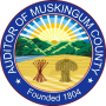Additional Levy - Voter approved new levy that generates additional revenue.
Bond Levy - A levy offered for construction activities with a specified term and amount. Proceeds are used to pay off principal and interest on the bond issuance. Mills are adjusted annually to meet debt service requirements. When debt is retired, the levy that created the mills terminates. A new bond levy will generally increase your tax.
Renewal Levy - Voter approved levy to extend the term and purpose of an expiring levy while considering original property valuations at the time of passage. Renewal mills have a reduction factor annually applied in order to raise the same amount of funding as in the original year of passage. If passed at the identical mills as the original levy, a renewal levy normally will not change the amount of tax paid.
Replacement Levy - Voter approved levy to extend the term and conditions of an expiring levy. Unlike renewal levies, replacement levies take the present-day property valuation into consideration. Replacement levies generally benefit from the increase in value since the passage of the original “replaced” levy. If passed at the identical mills as the original levy, a replacement levy will normally increase tax if the value of property has risen since the original passage of the levy.
Special Assessment - The charge assessed against real estate parcels for certain public services or projects. The assessment may only be levied against parcels that have received a direct benefit from the public service or project.
Taxing District - A geographic area that possesses unique taxing attributes.
Real Estate Tax - A tax on the real property owned by residents and businesses. Property tax includes the land and structures.
Mill - Property tax is measured in mills. A mill is 1/1,000. Each mill generates $1 of taxes for every $1,000 of a property’s assessed value.
Tax Rate - The property tax rate paid by a business or individual supports the schools, libraries, townships, municipalities, career technical schools, park system, and county-wide services. The rate includes voted millage and 10 mills of un-voted taxes guaranteed by the Ohio Constitution.
Effective Tax Rate - The rate actually paid by the taxpayer. The tax rate after the tax reduction factor is applied is the effective tax rate. You are protected from un-voted increases in taxes by Ohio Legislation known as House Bill 920. Passed in 1976, HB 920 reduces your rate as property values in your district increase during triennial reappraisals and updates.
Gross Millage - Total mills approved before application of tax reduction factors.
Inside Millage - The Ohio Constitution guarantees 10 mills of un-voted (also called inside millage) mills for each taxing district in Ohio. The amount is allocated among various local political subdivisions.
Outside Millage - Millage that has been voted on by residents.
Continuous Levy - Millage that has been allocated for an unlimited period of time, either through state allocation or voter approval.
Limited Term Levy - Levies that expire after a specified period of time.
Fixed Income Status - Under Ohio law, the money a property tax levy collects cannot increase beyond the sum collected in its first year, except for added value from new construction during the first year. This became law in 1976 with the passage of Ohio House Bill 920 which reduces the tax rate as property values in a district increase during triennial reappraisals and updates.
Reduction Factor - A formula applied to the class of business property and the class of property comprised of residential and agricultural properties in a taxing district so that the Fixed Income Status will be maintained during triennial reappraisals and updates. Specifically, tax reduction factors equal the percent by which the sums levied for a particular levy would need to be reduced so that the current year’s taxes equal the prior year’s net taxes.
Rollback - Two tax relief measures granted by the state for homeowners – the non-business credit and the owner occupancy credit.
Non-Business Credit - A 10% rollback on applicable levies for all residential and agricultural properties.
Owner Occupancy Credit - A 2.5% rollback on applicable levies for all properties both owned and occupied as the primary residence of an individual. An application must be filed in the County Auditor’s Office to receive the Owner Occupancy Credit.
Appraised Value - What the property is expected to sell for at a given point of time. Also known as the Market Value.
Assessed Value - 35% of the appraised/market value for real property. Also known as the Taxable Value.
